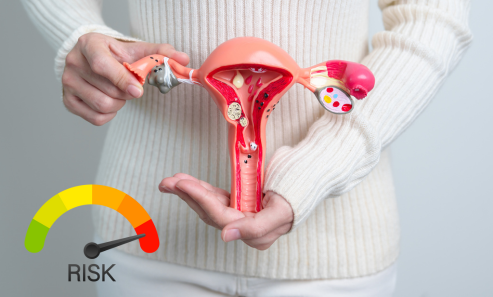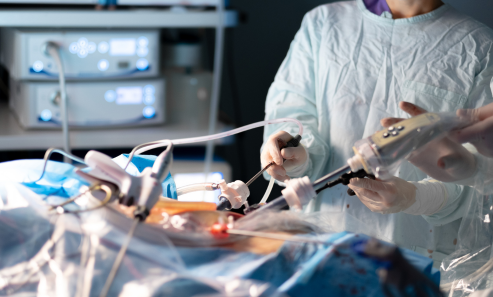




Total laparoscopic hysterectomy (TLH) is a minimally invasive surgical procedure used to:




Menorrhagia (heavy bleeding) or irregular periods.
Causes anemia and fatigue.
Persistent pain in the lower abdomen.
Associated with endometriosis or fibroids.
Benign tumors causing pain, pressure, or bleeding.
May lead to infertility or complications.
Severe pelvic pain, heavy periods.
Pain during intercourse or bowel movements.
Dropping of the uterus into the vaginal canal.
Causes discomfort and urinary issues.
Uterine, ovarian, or cervical cancer.
Hysterectomy part of cancer treatment.

Low-fat, high-fiber diet reduces the risk of uterine fibroids.
Regular exercise improves reproductive health.
Regular gynecological check-ups.
Hormonal therapy for fibroid management.
Early treatment of PID or STIs.
Prevents chronic pelvic inflammation.
Birth control pills or hormone therapy.
Helps manage endometriosis symptoms.
Complete removal of the uterus and cervix.
Treats various gynecological conditions.
Examination of removed tissues.
Detects cancer or other conditions.
TLH removes fibroids or affected tissues.
Provides long-term relief.


Blood tests, ultrasound, and imaging scans.
Laxatives or enemas for a clear bowel.
Stop blood thinners temporarily.

Patient under general anesthesia.
Small incisions made in the abdomen.
Laparoscope inserted through an incision.
Provides a real-time image of the internal organs.
Surgical instruments inserted through other incisions.
Uterus and cervix detached from surrounding tissues.
Uterus and cervix removed through a small incision.
Closure of incisions with stitches or surgical glue.

Hospital stay of 1-2 days.
Full recovery takes 4-6 weeks.
Pain relief medications prescribed.
Antibiotics to prevent infection.
Regular follow-ups to monitor healing and complications.
No heavy lifting or strenuous activities.